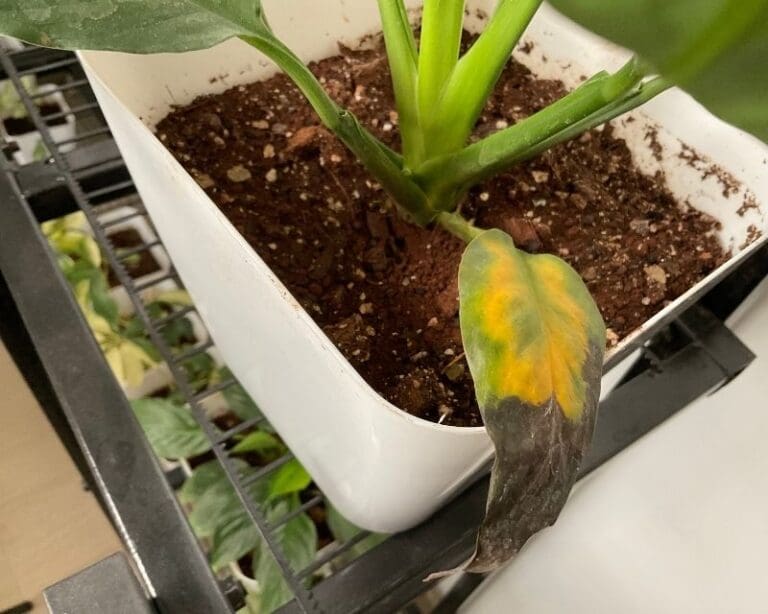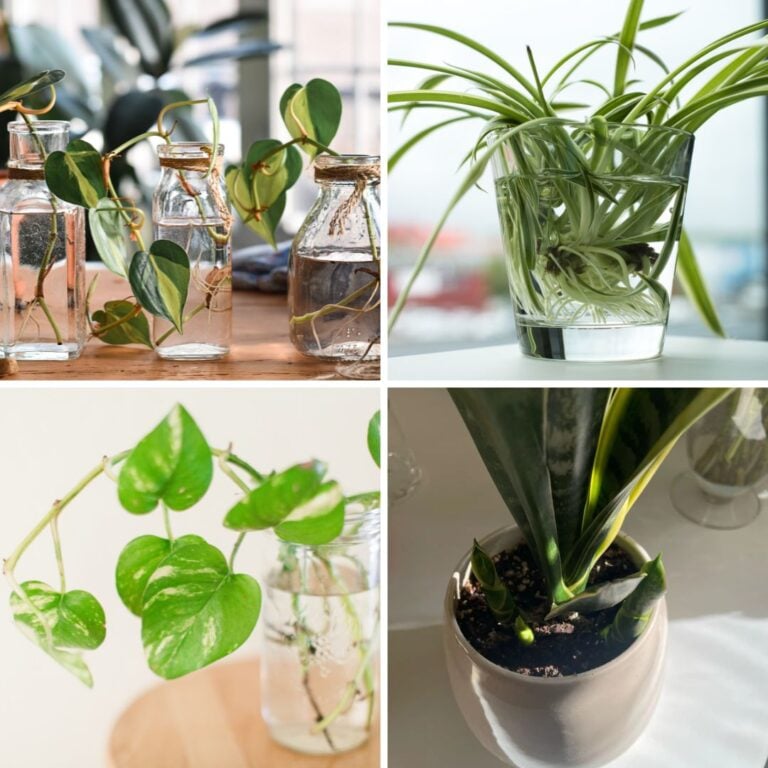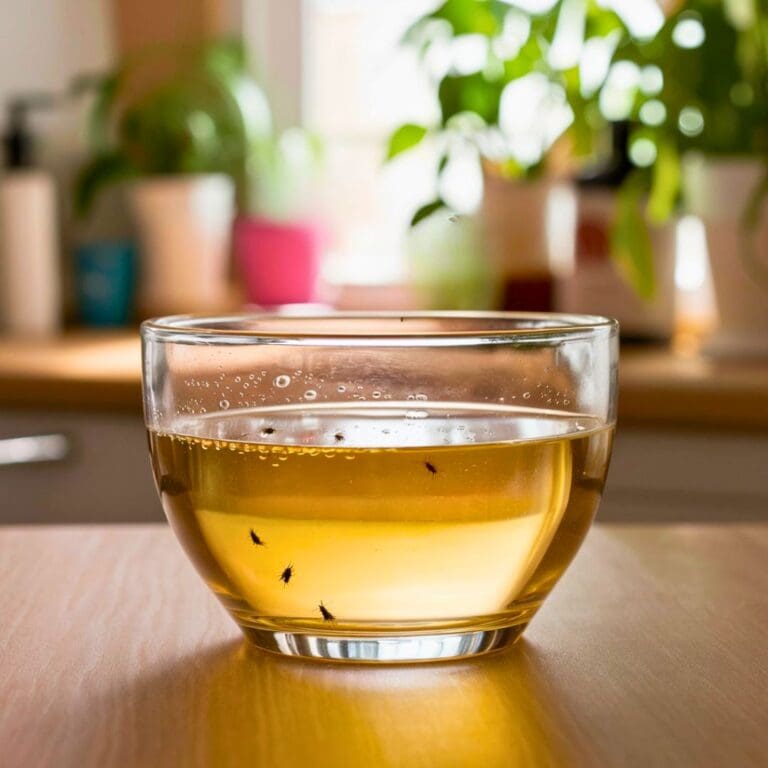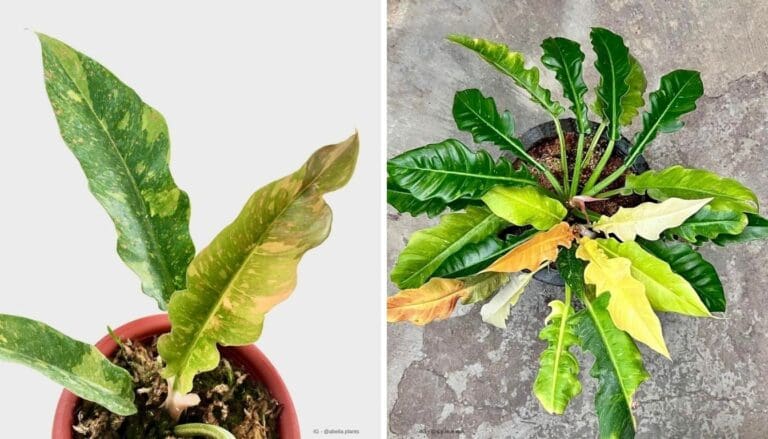7 Things You Can Make from Plant Cuttings This Summer
This summer, I’m honestly pretty excited to try out some new ways to use plant cuttings.
There’s just something satisfying about turning bits of my favorite plants into new projects.
Using plant cuttings means I can grow more plants, decorate my place, or start fresh projects—all without spending much money.
With a little patience and care, my garden (and my creativity) really gets a boost.
Please note: Simplify Plants is reader-supported. As an Amazon Associate, I earn from qualifying purchases made by our readers with no extra cost added to you all! Some links in the post are affiliate links and I get a commission from purchases made through links in the post.
1) Succulent Propagation

I’ve found it’s surprisingly simple to grow new succulents from cuttings. Jade, echeveria, sedum—honestly, most succulents seem made for this.
First, I carefully twist a healthy leaf or stem off the main plant. I try not to damage the base, but hey, sometimes I mess up.
Then I let the cutting dry out for a few days. This part’s important because it helps the end heal and keeps rot away.
Once the cut edge is dry, I just set it on slightly damp soil. I don’t go crazy with water—just a mist now and then.
Roots usually pop up in a week or two. I keep the cuttings somewhere bright but out of direct sun.
As the roots get going, new leaves show up. That first sign of growth always makes my day.
Succulent propagation is really best in the warm months like summer. It’s honestly a relaxing, low-key way to make more plants.
I like sharing my extra succulents with friends. Even if you’re new to plants, you’ll probably have some luck.
2) Herb Garden Starters

Growing herbs at home just makes sense to me—fresh flavor all summer, right at my fingertips. Making herb starters from cuttings is quick, and it saves me money at the garden center.
Basil, mint, and oregano are my go-tos for cuttings. I snip a healthy stem, pull off the lower leaves, and stick it in a glass of water. The glass goes near a window, but not in direct sun.
After a week or two, I spot little white roots. When those roots are about an inch long, I tuck the cutting into a pot of soil. A little water, a sunny windowsill, and that’s it.
When the herb plants get bigger, I can snip fresh leaves for cooking. It’s so satisfying to grab a handful right before dinner.
Fresh herbs just make everything taste better—salads, pasta, soup, you name it. Watching my kitchen fill up with fresh green is honestly one of my favorite parts of summer.
If I end up with too many cuttings, I’ll give some away. They root so fast, it’s hard not to share. Herb garden starters are just practical, easy, and a nice way to stretch my garden.
3) Spider Plant Babies
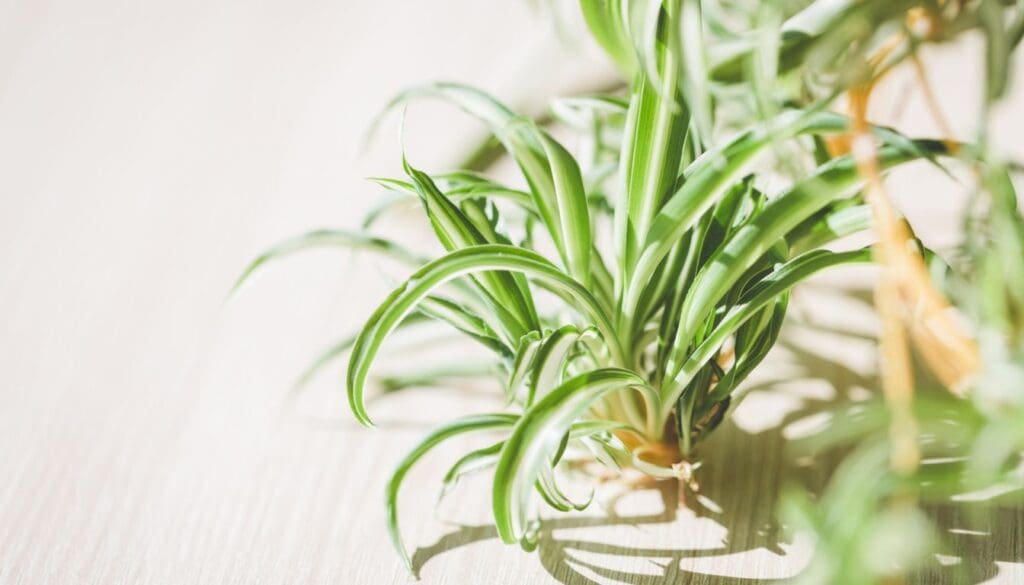
Spider plants are just fun. They send out all these little “babies” on long stems, and it’s almost too easy to root them for new plants.
When I spot a healthy baby, I snip it off with sharp scissors. If it’s got tiny roots, I pop it in a glass of water. Those roots get bigger in about a week.
Once the roots are stronger, I plant the little guy in a pot with fresh soil. I keep the soil slightly damp—nothing fancy.
Spider plant babies make sweet gifts. I love handing them out and seeing them brighten up friends’ shelves. Plus, they clean the air and look cool.
I’ve noticed spider plants do best in bright, indirect light. I water when the soil is dry about an inch down.
In just a few weeks, the babies start to fill out. It still surprises me how easy it is to turn a cutting into a whole new plant.
4) Pothos Vine Cuttings

Pothos vines are everywhere in my house now. They’re easy, forgiving, and just look good.
To take a cutting, I snip a healthy vine right below a leaf node. I like to have at least two leaves on each cutting, and I pull off the lowest leaf.
I put the end in a jar of clean water, making sure the node is underwater. The jar sits in bright, indirect light, and after a few weeks, roots show up.
Once the roots are a couple inches long, I move the cutting into moist potting soil. I try not to overwater. New leaves and vines start popping up soon.
Sometimes I just leave pothos cuttings in water—they look great in a vase. They add a fresh vibe to any spot and are super easy to share.
Caring for new pothos cuttings is easy. I water when the soil dries out and skip the harsh sunlight.
Watching the roots grow is weirdly fun. It’s a simple summer project that gives me more plants to play with.
5) Mint Plant Pots
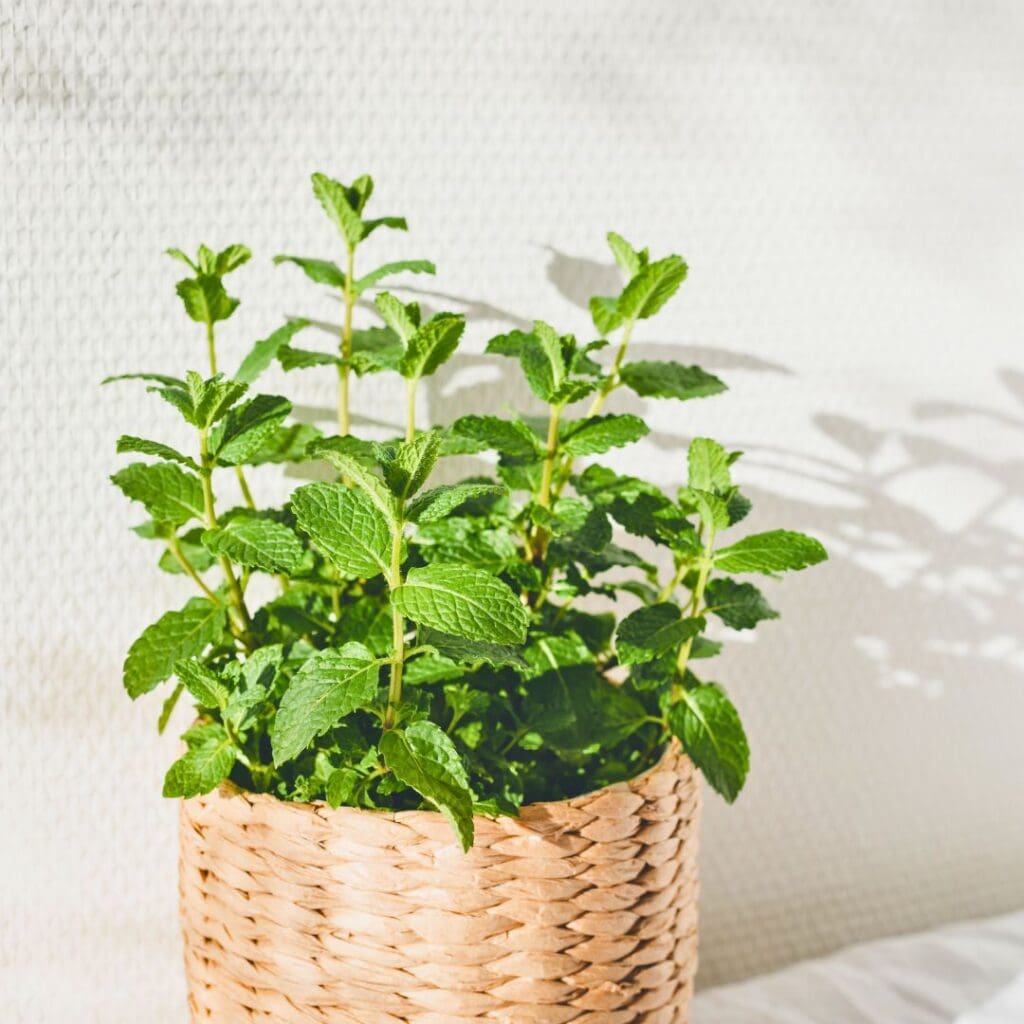
Mint is one of those plants I always want more of. Making mint plant pots from cuttings is a summer must for me—fresh mint for drinks, recipes, or just to smell.
I snip a healthy 4–6 inch stem with a few leaves at the top. I pull off the lower leaves, then stick the stem in a glass of water near a sunny window.
In a week or two, I usually see roots start to form. That moment is always a little thrill.
Once the roots look good, I plant the cutting in a small pot with soil. I water it well and keep the soil damp.
Mint grows so fast and barely needs any fuss. I like lining up a few pots on my kitchen windowsill—easy access for tea or lemonade.
Sharing extra mint with friends is easy, and honestly, it’s a great starter plant. Mint’s perfect for beginners since it’s hard to mess up.
I try not to let the soil dry out. If there’s any sign of bugs, I trim the mint and give the leaves a quick rinse.
6) Rosemary Shoots

Rosemary is one of those herbs I can’t get enough of. Growing it from cuttings is straightforward and honestly pretty rewarding.
I snip a healthy sprig about 4-6 inches long and strip off the lower leaves. That way, the stem is ready to root.
I put the cutting in water or moist soil to help it grow roots. Usually, I see little roots after a couple weeks. I keep the container somewhere sunny but not blazing hot.
When the roots are about an inch, I move the shoot into soil. I go easy on the water—rosemary likes well-drained soil and doesn’t want to be soggy.
Rosemary is great for cooking, making oils, or just giving away. A few plants last me all year, and I love having fresh sprigs handy.
It’s a fun summer project that’s easy for beginners, and I get to enjoy rosemary in my kitchen and garden.
7) Fiddle Leaf Fig Offshoots

I’ve started trying to grow new plants from my fiddle leaf fig. Fiddle leaf fig offshoots are one of my favorite ways to get more greenery at home. Those big, shiny leaves just make a room feel special.
I look for a healthy branch and use sharp, clean scissors to snip off a section with a few leaves. Gotta be careful not to hurt the main plant.
I put the cutting in a jar of water, making sure only the stem is submerged. I change the water every few days to keep things fresh. Roots usually start showing up after a few weeks—I check on them every morning, just in case.
Once the roots are a couple inches long, I plant the offshoot in a pot with moist, well-draining soil. I keep it in bright, indirect light at first, since too much sun can be rough on a young plant.
Fiddle leaf figs are slow to put out new leaves, so patience is key. I water only when the top inch of soil is dry.
Watching the offshoot turn into its own plant is honestly so rewarding. It’s a cool way to share my favorite plant with friends, and it saves money, too.
Caring for Your Plant Cuttings
I always try to use the right tools and prep before starting with plant cuttings. A little care at the start makes a big difference.
Choosing the Right Tools and Supplies
I grab clean, sharp scissors or pruning shears for smooth cuts. Before I start, I wipe everything down with rubbing alcohol—just to be safe.
Small pots or trays with a light potting mix (sometimes perlite and peat) work best for drainage. I like to label each pot with the plant and the date so I don’t lose track.
A spray bottle is perfect for keeping the soil just damp. Sometimes I use a plastic bag or dome to hold in humidity—most cuttings seem to love that.
| Supplies | Why I Use Them |
|---|---|
| Pruning Shears | Clean cuts, healthy stems |
| Pots/Trays | Easy planting and labeling |
| Potting Mix | Good moisture and drainage |
| Spray Bottle | Gently wets soil and leaves |
| Plastic Cover | Holds in warmth and moisture |
Best Practices for Rooting Success
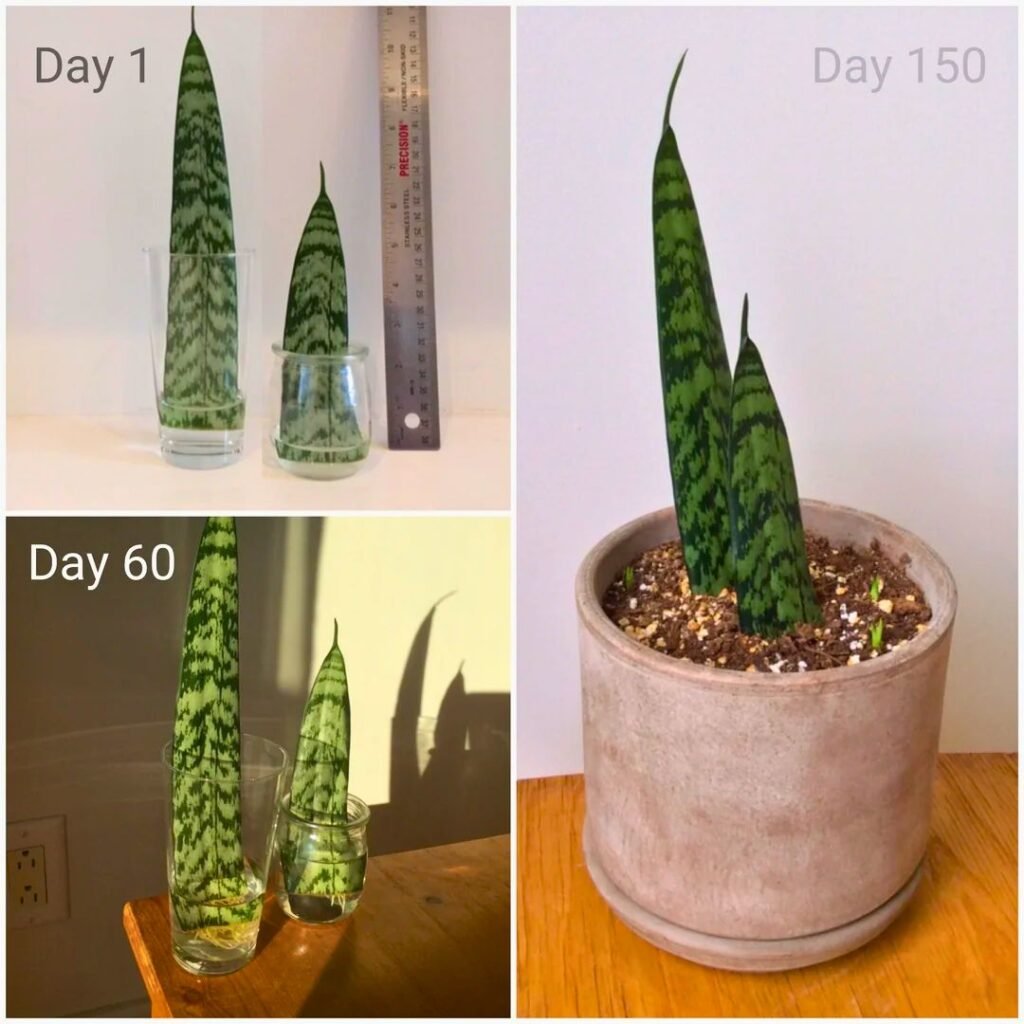
I always try to take cuttings from healthy, disease-free stems. I look for stems that seem strong and have at least a couple of leaves.
Right after snipping, I remove the lower leaves and, if I’ve got it handy, dip the cut end in rooting hormone powder. It just gives roots a little head start.
I stick the cuttings into damp soil and press them in gently so they don’t topple over. After that, I put them somewhere warm, but not in direct sunlight—too much sun can really dry them out before roots have a chance.
Every day, I peek in to check for mold or if the soil’s dried out. If things look a bit wilted or dry, I give a quick mist with water.
I keep an eye out for new growth—that’s always the best sign roots are forming.
Creative Uses for Rooted Cuttings
I honestly love coming up with new ways to use rooted cuttings around the house. These little plants brighten up any spot, and they’re such sweet gifts.
Designing a Decorative Container Garden
When I have a few rooted cuttings, I like to arrange them in a shallow container and make a mini garden for my porch or kitchen windowsill. Mixing different shapes, colors, and sizes makes the display pop.
For a bit of fun, I’ll toss in pebbles, shells, or tiny figurines as decorations. It doesn’t have to be fancy.
Container gardens can be small—sometimes I use old mugs, bowls, or even a tin can. I just make sure there are a few drainage holes so the roots don’t sit in water.
If I plant cuttings like jade, pothos, or spider plants together, it brings a lot of green to little spaces.
For care, I poke my finger in the soil and water when it feels dry. A bit of sunlight helps the cuttings grow, but I don’t overdo it.
Here’s what I usually go by:
| Plant Type | Sun Needs | Watering |
|---|---|---|
| Jade | Bright | Weekly |
| Pothos | Low light | 1-2 times/wk |
| Spider Plant | Bright | 1-2 times/wk |
Container gardens from cuttings are quick to set up, and I can always rearrange as things grow.
Sharing with Friends and Family
Giving rooted cuttings as gifts is something I really enjoy. I’ll pop a little plant in a clean glass jar or a cute pot, maybe tie on a ribbon or a tag for good measure.
People genuinely seem happy to get a living plant to care for. It’s a fun way to help friends and family start their own gardens.
I usually scribble a short care note, like “Needs bright light and water once a week.” It just makes things easier for the new plant parent.
When I visit someone, bringing along a plant cutting is simple and thoughtful. It works for teachers, neighbors, or honestly anyone who likes plants.
Sharing my cuttings saves a bit of cash and lets me spread some green joy. I think it’s just an easy way to connect and bring a smile.
Frequently Asked Questions
I really love growing new plants from cuttings, especially in summer when everything seems to grow faster. Lots of herbs, succulents, vines, and houseplants root well if you pick the right cutting and give them some care.
What are some easy-to-propagate plants for softwood cuttings?
From what I’ve seen, basil, mint, coleus, and pothos root the easiest from softwood cuttings. Spider plants and succulents like jade or echeveria usually work well too.
Can you provide a list of plants that can grow in water from just a cutting?
Pothos, mint, basil, and spider plant babies all root in water for me. I’ve also had luck with philodendron, lucky bamboo, and tradescantia. Most soft-stemmed herbs and vining houseplants seem to do best.
Which varieties are best for semi-hardwood cuttings during the warmer months?
I’ve had good results with semi-hardwood cuttings from lavender, rosemary, camellia, and holly in the summer. Some hydrangeas and gardenias work too if I catch the cutting when the stem’s partly firm.
How do you properly take a hardwood cutting from a plant?
I pick a mature, healthy stem from last season’s growth. After cutting just below a node, I trim off any leaves.
If I have rooting hormone, I’ll dip the end and then plant it in moist soil.
What’s the difference between softwood, semi-hardwood, and hardwood cuttings?
Softwood cuttings come from young, flexible shoots.
Semi-hardwood cuttings are from stems that are partly mature and a bit firmer.
Hardwood cuttings are taken from mature, woody stems, usually in late fall or winter.
Are there specific tips for encouraging root growth in stem cuttings?
I usually grab a pair of sharp, clean scissors—dull blades just don’t cut it, literally or figuratively. Indirect light seems to work best, and I try to keep the soil or water nice and moist, but not soggy.
Every now and then, I’ll dip the stem in rooting hormone. I also like to mist the cuttings; it feels like a little extra care goes a long way.
Recommended Garden Supplies
| Product Image | Our Recommended Gardening Supplies | Check Offers! |
|---|---|---|
Top Top
Top
Top
Top
Top
Top
Top
Top | rePotme Houseplant and Tropical Classic Potting Soil Mix | Check Offer On Amazon |
 Top
Top
Top
Top
Top
Top
Top
Top | Espoma Organic Indoor Plant Food | Check Offer On Amazon |
 Top
Top
Top
Top
Top
Top
Top
Top | GooingTop LED Grow Light 6000K Full Spectrum Clip Plant Growing Lamp | Check Offer On Amazon |
 Top
Top
Top
Top
Top
Top
Top
Top | Soil Moisture Meter | Check Offer On Amazon |
 Top
Top
Top
Top
Top
Top
Top
Top | Govee Hygrometer Thermometer, Bluetooth Enabled! | Check Offer On Amazon |
 Top
Top | LEVOIT Humidifiers for Large Room(Best For Plants) | Check Offer On Amazon |
 Top
Top
Top
Top
Top
Top
Top
Top | Upgraded DIY Automatic Drip Irrigation Kit, 15 Potted Houseplants Support | Check Offer On Amazon |
 Top
Top
Top
Top
Top
Top
Top
Top | Stainless Steel Heavy Duty Gardening Tool Set | Check Offer On Amazon |
 Top
Top
Top
Top
Top
Top
Top
Top | Bonide Insecticidal Soap | Check Offer On Amazon |
 Top
Top
Top
Top
Top
Top
Top
Top | Bonide 32 oz Spray Neem Oil for Organic Gardening | Check Offer On Amazon |
 Top
Top
Top
Top
Top
Top
Top
Top | Garden Safe Fungicide | Check Offer On Amazon |


